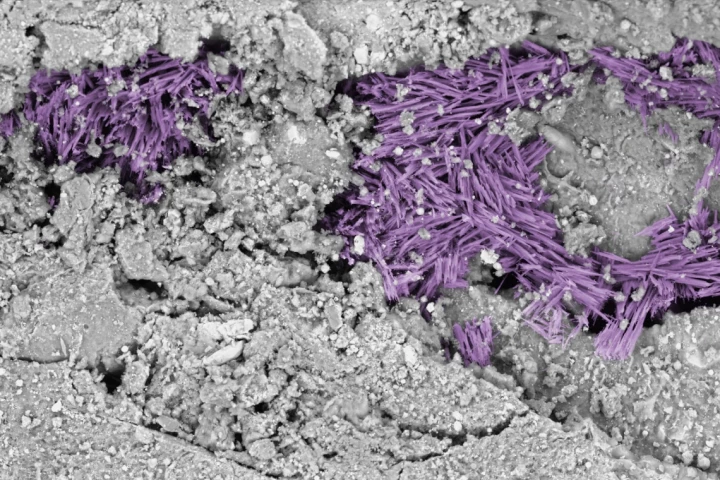Life
-
Finding alien life won’t be a flying saucer landing at the White House – NASA scientists will hold a press conference to excitedly show off a chart that’s incomprehensible to most people. Now we’re a step closer to that boring but groundbreaking day.
-
Dr. Frankenstein might not have needed a lightning bolt to bring his monster to life after all. A new study from Stanford suggests that life might have been kickstarted by constant zaps from “microlightning” between water droplets.
-
Asteroid Bennu seems to have come from a long-lost world on the fringes of the solar system, where saltwater pooled and dried over thousands of years and life’s basic ingredients were widespread.
-
Among the important scientific discoveries made every year are some that reveal that the world is way weirder than we give it credit for. From bizarre biological quirks that cause demonic hallucinations, to sci-fi scenarios like brains piloting robots and full head transplants, here are the weirdest science stories of 2024.
-
Aliens might be able to detect us from the radio signals we beam to Mars to control our rovers there. Astronomers have now listened in on the nearby TRAPPIST-1 system to check whether aliens are chattering between their own neighboring planets.
-
Everybody from NASA to David Bowie has wondered if there’s life on Mars – and now we might have a precise place to look for it. A new Caltech study has shown that photosynthetic microbes could thrive in a small habitable zone beneath the ice.
-
Scientists have found evidence that an isolated pocket of complex life evolved 2 billion years ago – only to go extinct and take another 1.5 billion years to return to that level. The controversial find could rewrite our understanding of life on Earth.
-
Long before dinosaurs roamed the Earth, another giant predator claimed the top spot in its environment. Meet Gaiasia, a huge salamander-like creature that stalked the Permian swamps.
-
A new study of ancient detrital zircons from inland Australia has found the first evidence that the Earth has had fresh water and dry land four billion years ago, much longer than previously thought. In fact, 500 million years further back in time.
-
The Earth’s magnetic field is vital for life – without it, the Sun’s radiation would sterilize the planet. But a new study suggests we wouldn’t be here at all if that magnetic field hadn’t almost completely collapsed half a billion years ago.
-
Scientists have discovered that a once-in-a-billion-years evolutionary event is underway, as two lifeforms have merged into one organism that boasts abilities its peers would envy. Last time this happened, Earth got plants.
-
Venus may be a hellscape, but there’s a chance some forms of life could evolve there. A new MIT study has now found that the building blocks of life are surprisingly stable in highly concentrated sulfuric acid – which Venus’ clouds are made of.
Load More











